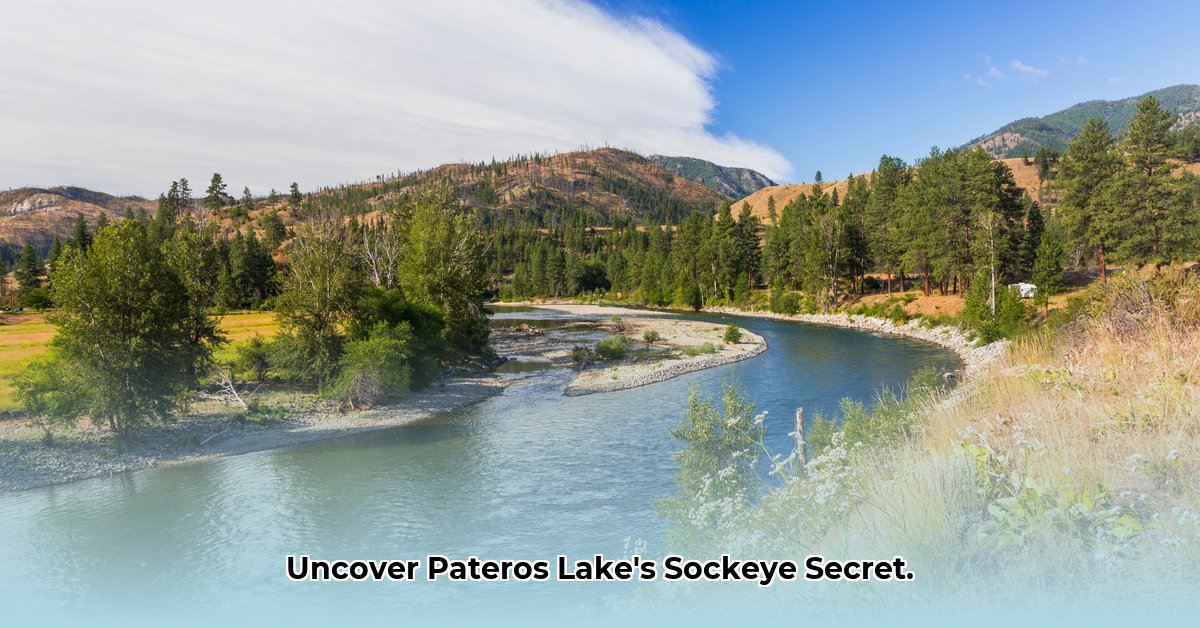
Understanding Lake Pateros Fisheries
Lake Pateros, located in Douglas County, Washington, supports a diverse fish community. While precise population numbers are unavailable for many species, key species include sockeye salmon, rainbow trout, walleye, and bass. Understanding the spatial distribution of these fish, especially sockeye salmon, is critical for successful fishing and effective management. The lake's unique geography, particularly the old river channel near the Okanogan River mouth, influences fish distribution. While current data lacks precise population estimates for each species, ongoing research aims to address this gap. This lack of precise data highlights the need for continued monitoring and research. Do current fishing regulations sufficiently protect the biodiversity of Lake Pateros?
Sockeye Salmon Hotspots & Fishing Techniques
The old river channel near the Okanogan River mouth is a well-known sockeye salmon hotspot. This area provides ideal spawning and feeding conditions. While a detailed map illustrating precise hotspots is unavailable, this general area offers the best opportunity to find high concentrations of sockeye salmon. Effective fishing techniques vary depending on the season and water conditions. Popular methods include trolling with lures (spoons, spinners), using downriggers to target specific depths, and fly fishing. Strong lines and reels are essential for handling the powerful sockeye. For sustainable fishing, always follow Washington Department of Fish and Wildlife (WDFW) daily catch limits and consider catch-and-release practices. How can anglers maximize their chances of a successful catch while minimizing environmental impact?
Fisheries Management & Conservation
Responsible management requires collaboration among stakeholders:
WDFW: Conduct ongoing fish population monitoring, enforce fishing regulations, and fund research to better understand the lake's ecosystem. The WDFW's data-driven approach to management is vital for the lake's future.
Recreational Anglers: Adhere strictly to WDFW regulations, practice catch and release where appropriate, and properly dispose of fishing line and waste. Reporting illegal activity is also crucial. Anglers' adherence to regulations is paramount for maintaining a healthy fish population.
Local Communities: Support initiatives to protect water quality and the lake's overall health. Advocate for sustainable fishing practices, participate in lake cleanups, and promote responsible tourism. Local community involvement is essential for long-term sustainability.
Addressing Potential Risks
Several factors threaten Lake Pateros's fisheries:
Habitat Degradation: Erosion and pollution damage fish habitats. Mitigation strategies include implementing land management practices that minimize erosion and reduce pollution sources.
Overfishing: Exceeding catch limits depletes fish populations. Strict adherence to regulations and responsible catch-and-release practices are necessary.
Climate Change: Changes in water temperature and flow impact fish survival. Mitigation efforts need to focus on adapting to climate change impacts on the lake's ecosystem.
Invasive Species: Non-native species out-compete native fish. Preventing the introduction and spread of invasive species through boat cleaning and other preventative measures is critical.
Further Research & Resources
More research is needed to accurately assess fish populations and understand the lake's ecosystem fully. The WDFW website (https://wdfw.wa.gov/) provides up-to-date information on fishing regulations and research findings. Other government agencies involved in fisheries management also offer valuable resources. Continued collaboration and data collection are key to ensuring the long-term health of Lake Pateros's fisheries. What are the next steps in research to improve our understanding of the Lake Pateros ecosystem?